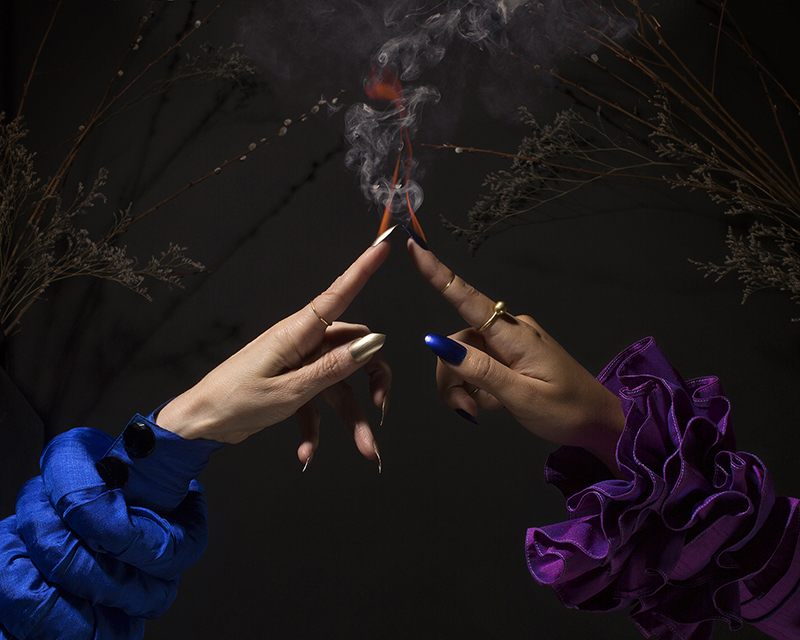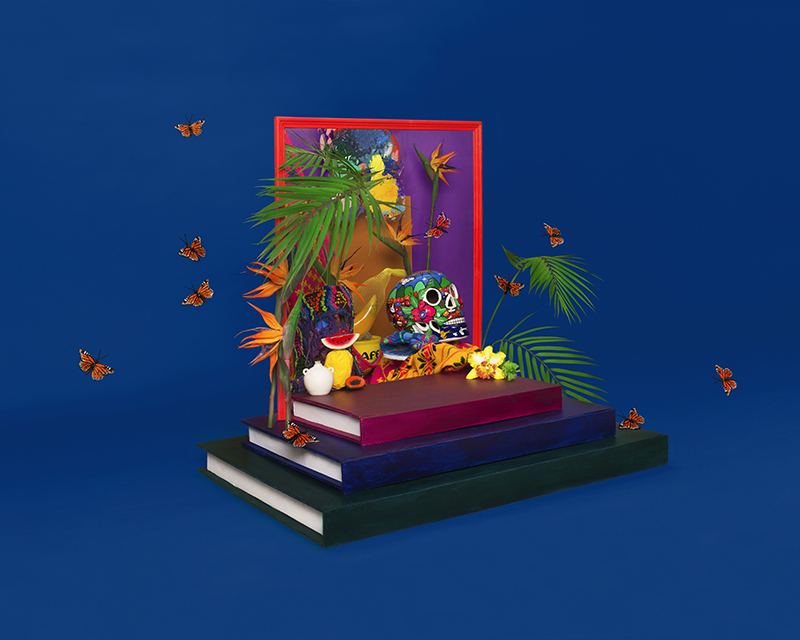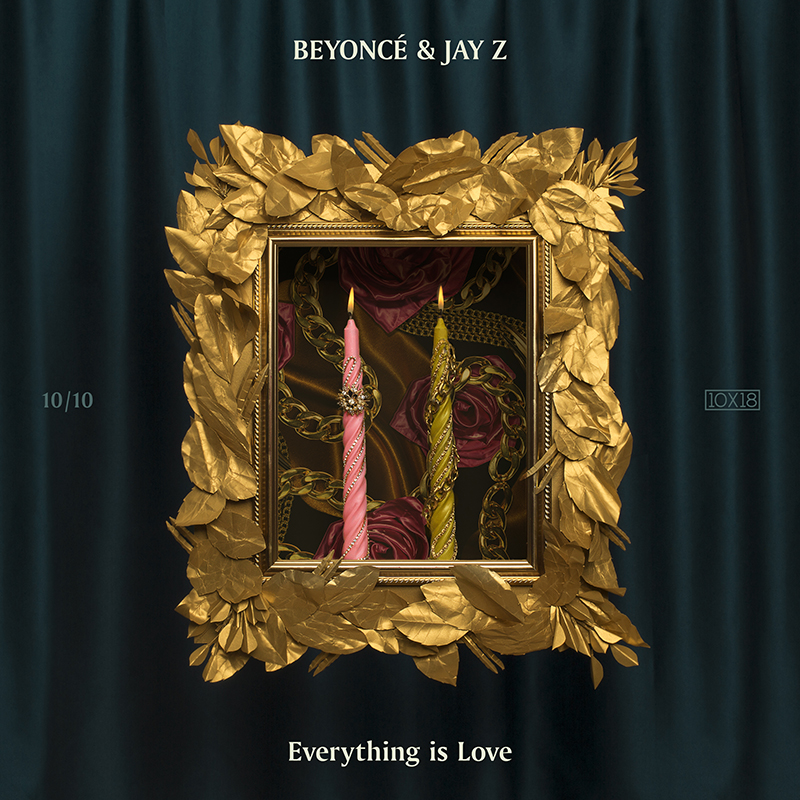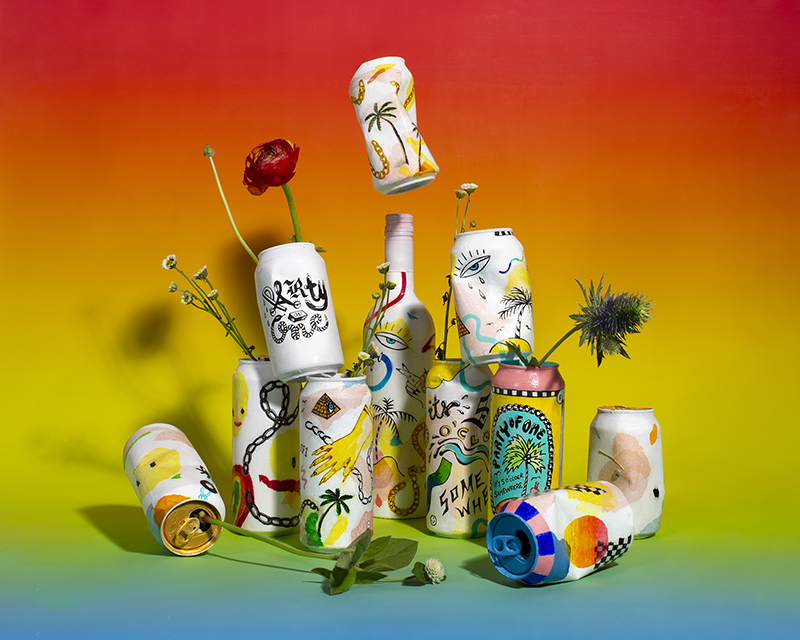
This interview is part of an ongoing Design Observer series, Chain Letters, in which we ask leading design minds a few burning questions—and so do their peers, for a year-long conversation about the state of the industry.
This December, we’re elevating the act of gift giving by pondering the items inside the box: examining design as craft, poring over process, and picking the brains of designers whose technical skill turn products into objets d’art.

Editorial still life for The New York Times — 8 Books Reshaping Latinx Literature.
Party of One is a collaborative creative studio founded by Melissa Deckert and Nicole Licht, based in Brooklyn, New York. Through combined experience in fine arts and traditional design, PO1 specializes in visual campaigns with an emphasis in unique and often handcrafted prop design, styling and sets. Their clients include The New York Times, Michael Kors, American Express, and Penguin Random House. Party of One’s work has been featured in a number of exhibitions across the US and has appeared in online and print publications including Plastik Magazine, Working Not Working Magazine, and AIGA Eye on Design. Independently, they have lectured at Mankato State University, Rhode Island School of Design, and have been guest critics at Cooper Union, Pratt Institute, and The New School.
Walk us through your ideation process. What are a few key steps in taking a product from concept to production? How do you consider the end user?
With our product being most often visual campaigns, we work closely with brands to develop the creative concept, set art direction, design and fabricate props, as well as photograph and finalize imagery. Because our work can be very process-oriented, we take great pains to communicate, consider, and build trust with our clients throughout the project, so that there are no unfortunate surprises at the end. While we might decide to leave some room for experimentation before we arrive at a final, we share a good deal of our material references, sketches and process images throughout production and build out.
We really enjoy the ideation stage of a project because it is where we can be thoughtful and considered, but also allow ourselves to entertain crazy ideas.
Given all that, we really enjoy the ideation stage of a project because it is where we can be thoughtful and considered, but also allow ourselves to entertain crazy ideas. We always have our clients and their audience in mind, but aim to bring a little something unexpected to each project—whether it is a new material to explore or a unique process to employ.

Who else but Beyonce could film at the Louvre? One of our album selections for 10x18.co, where a select group of artists reimagine their top ten albums of the year.
A lot of products that we use today were the outcomes of happy accidents. Have you ever made mistakes in the making process that helped you come up with a new idea or overcome a creative roadblock?
We actively look for happy accidents in every project. If a direction is set, we might not be able to use an unexpected outcome in the moment, but will file it away for use in the future. In our personal projects, we often set up roadblocks or restrictions to work around (used crushed cans, for example) as an extra challenge for ourselves and as a exercise to overcome creative roadblocks—while giving us permission to make less than picture perfect things.
What’s a trend that you wish would just die already?
Anxiety, hustling harder, and pandering to women.
What’s your favorite gift to give and why?
Money, LOL.

A culmination of summer experimental work, a practice exploring our differences and overlaps.
From Victor Melendez: As two different designers with different aesthetics, how do you translate your individual design sensibilities into a unified voice?
It is a constantly evolving process! Luckily, we had a chance to work together as brand designers at Etsy before we began our studio practice together, which was a great testing ground to unite our individual aesthetics for a common brand. Once we launched our studio, we realized that our personal tastes and goals were really quite similar, despite sometimes approaching projects in different ways. Nicole is initially more material- and process-driven while Melissa feels most comfortable at the onset determining a structure and story. As a result, we often bounce back and forth in the beginning of a project until landing on a solution that reflects each of our interests for a unified outcome.
Your question to Celene Aubry, print shop manager at the historic Hatch Show Print in Nashville: Do you have any creative outlets that offset the multi step process you employ at work— we are curious to find if you crave any immediate creative pleasures?
